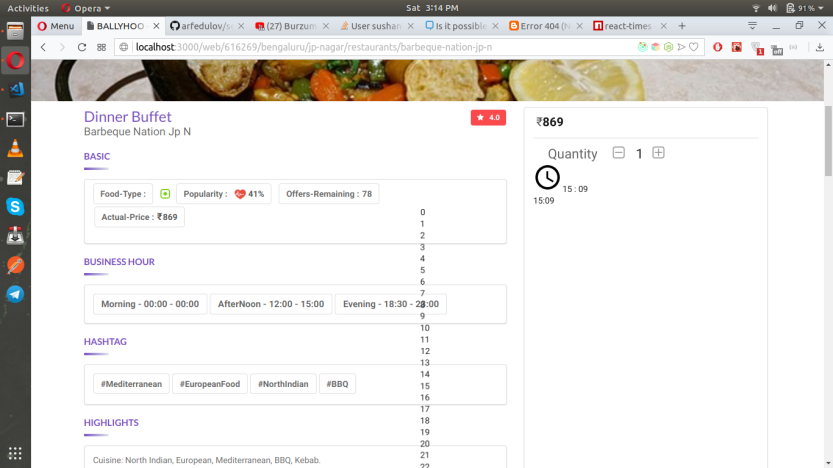

If most JQuery applications import the JQuery library from this CDN, then users are more likely to have JQuery in their cache already.
ERROR GET UNPKG REACT DOWNLOAD
This speeds up your site because the browser doesn't need to download the library again.įor example, JQuery has an official JQuery CDN. This can make your application faster than hosting files yourself.ĬDN's also have the advantage that if you are using libraries common to multiple sites then your users may already have the file cached in their browser. They are usually highly performant and offer location cached files so no matter where your users are, they receive the files from geo locations close to them.

These are file hosting services for multiple versions of common libraries. What is a CDN?Ī CDN is a Content Delivery Network. In fact, if you've followed any JavaScript tutorial for a library, then you've probably already used a public CDN but may not be aware of it. This can simplify deploying the application and keeping dependencies up to date. Most popular JavaScript libraries are available from a public Content Delivery Network (CDN).
ERROR GET UNPKG REACT CODE
allowClickOutside is now closeOnClickOutside for clarity.When you're writing a Vanilla JavaScript application, you don't have to host all the code you use on your own site.allowEscapeKey is now closeOnEsc for clarity.You can either specify content: "input" to get the default options, or you can customize it further using the content object. type: "input", inputType, inputValue and inputPlaceholder have all been replaced with the content option.All stylistic changes can instead be applied through CSS and a custom modal class. Your button will automatically show a loding animation when its closeModal parameter is set to false. showLoaderOnConfirm is no longer necessary.Instead, you can set the closeModal parameter in the button options. closeOnConfirm and closeOnCancel are no longer used.Otherwise, you can specify a class in the button object. As a useful shorthand, you can set dangerMode: true to make the confirm button red. Instead, you should specify all stylistic changes through CSS. Instead, you can set button: "foo" to set the text on the confirm button to "foo", or buttons: to set the text on the cancel button to "foo" and the text on the confirm button to "bar". confirmButtonText and cancelButtonText are no longer needed.By default, only the confirm button is shown. Instead, you can set buttons: true to show both buttons, or buttons: false to hide all buttons.


swal("Hello world!")), that parameter will be the modal's text instead of its title. When using a single string parameter (e.g.js-file).īelow are some additional deprecated options along with their replacements: The most important change is that callback functions have been deprecated in favour of promises, and that you no longer have to import any external CSS file (since the styles are now bundled in the. SweetAlert 2.0 introduces some important breaking changes in order to make the library easier to use and more flexible. Whenever you want to use JSX in your SweetAlert modal, simply import swal from instead of from sweetalert. Note that you need to have both sweetalert and as dependencies in your package.json.Īfter that, it's easy.
ERROR GET UNPKG REACT INSTALL
In order to use SweetAlert with JSX syntax, you need to install SweetAlert with React. That's why we've also made it easy to integrate your favourite template library into SweetAlert, using the SweetAlert Transformer. While the method documented above for creating more advanced modal designs works, it gets quite tedious to manually create nested DOM nodes. Using this technique, we can create modals with more interactive UIs, such as this one from Facebook. The rest is just basic React and JavaScript. The only code that's specific to SweetAlert is the tActionValue() and the swal() call at the end. We then extract its DOM node and pass it into under the swal function's content option to render it as an unstyled element. All we're doing is creating an input tag as a React component. This might look very complex at first, but it's actually pretty simple.


 0 kommentar(er)
0 kommentar(er)
